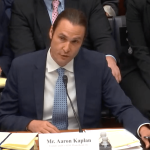Getty Images
- Earlier this year, my family moved from a New York City apartment into a New Jersey house.
- Four days later, we got a flash-flood warning from Hurricane Ida. Then our basement was underwater.
- The flood was a stark message for me: Unless we take climate action, this will only happen more.
We moved into our new house on a sweet suburban block in New Jersey on the last Sunday in August. The little boy next door came over mid-move, introduced himself to my 4-year-old son, and the two of them took off into the backyard, fast friends. That night, we ordered a pizza and ate it on the floor because we still had no dining-room furniture.
We’d moved out of a 750-square-foot apartment in Brooklyn, where we’d spent the pandemic on top of each other. Now we had about three times as much room, spread out over three levels. There were many satisfied smiles that night.
Four days later, on September 1, our phones blared with a tornado-watch alert as the remains of Hurricane Ida moved north. What happened next made me realize that unless we do something to reel in climate change, the damage to my house — and to many other communities — will only get worse.
When we received the tornado alert, my parents, who had been through a couple of devastating tornadoes in recent years at their home in Tennessee, urged us to go to our basement and wait for a while. The rain became torrential, the flash-flood warnings came, and I cleared a drain in our backyard that the sellers of our house had warned us about. It fills with leaves, they said, and you have to keep it clear in a storm or it will back up.
Several inches of water had already built up around it, and it felt like my efforts were in vain. I headed back inside for a respite.
A few minutes later, I heard my partner yell for help. Water was now pouring in underneath and around the sides of the door leading into our laundry room from the backyard. A solid inch of water had accumulated in our storage room and laundry room, and it was now heading through the door toward the finished family room. I sent my parents upstairs with our son.
My partner and I spent most of that night doing damage control. We cleared the outdoor drains of flotsam that accumulated on top, wearing rubber boots into the muck swirling over them because of the lightning flashing constantly overhead. We tried to direct most of the stream toward our garage with brooms so that it wouldn’t all spill sideways into the family room. We watched our sump pump gurgle miserably, working hard but completely overwhelmed.
The next day, we had a high-water mark three feet high against our back door. We considered ourselves lucky that the pressure of the water didn’t break the door, which happened at our town library.
We put a dehydrator and all our fans in the basement — first in the unfinished space, and then in the finished family room.
But the vinyl flooring in the family room looked puckered and felt spongy, even after it had dried on the surface and we had cleaned it thoroughly. We pulled up the vinyl to discover a soaked subfloor throughout the family room.
We filed an insurance claim. An assessor came; we did receive some money after he aimed a humidity meter at the spot on the subfloor that kept soaking through. It came up at 100%. Contractors came and pulled up the subfloor and opened a space in the interior wall to determine how the water was getting in.
The good news: The foundation was not cracked, nor was the cement beneath the subfloor. We had caught our problem before it compromised the house’s structural integrity.
The bad news: We needed a whole new floor. The wall, too, was damaged; we pulled out soaked, crumbled sheetrock from its newly exposed innards. The solution was deemed a metal plate installed at the base of the wall and sealed in concrete that would effectively waterproof our family room.
When you buy a house, especially coming from a largely full-service New York City rental building, you understand that no one’s going to put your recycling on the curb for you. No one is calling in electricians or plumbers or exterminators on your behalf. You’re in charge now, for better or for worse.
But little prepared us for the reality of the “worse”: a tropical storm dropping record-setting rains over New Jersey four days after we moved in.
We’re luckier than many. At least 50 people in the northeast died; 25 were in New Jersey, one in our town. When we drove around after the storm, the piles of furniture, toys, carpet, and debris we saw outside homes made our pile of drenched moving boxes from our basement — our only real casualty — pale in comparison. Whole lives were put out on curbs, while our life here was just getting started.
The total economic impact of Hurricane Ida in the United States is estimated at $95 billion, or one-half of 1 percent of the country’s gross domestic product. Infrastructure damage in the northeastern states alone was about $25 billion.
It’s a dizzying feeling to realize that my house that I have owned for barely two months is part of that total. And it’s not going to end here. I can make repairs, and I’m lucky to have gotten insurance money that will help to that end.
But my Geico is not going to cover climate change. President Biden on November 15 signed into law a $1.2 trillion bipartisan infrastructure bill that acknowledges climate change is here to stay and allots billions to shore up vulnerable communities and to bolster the electric grid.
According to Flood Factor, a website created by the First Street Foundation to catalog rising flood threats nationwide and to show that the federal government has understated those threats, my county and state are at ever-increasing risk of flooding. We’re going to have to do more than install metal plates in our walls and redo our floors. Consume less, walk more, drive hybrids, invest in green spaces and clean technology.
Was my home purchase worth it? Yes. I’m gaining more with my move than I lost this time. I’m making changes to minimize future losses.
But it comes with the sobering realization that there will be future losses, and we’re all going to have to do something about it.
Powered by WPeMatico





